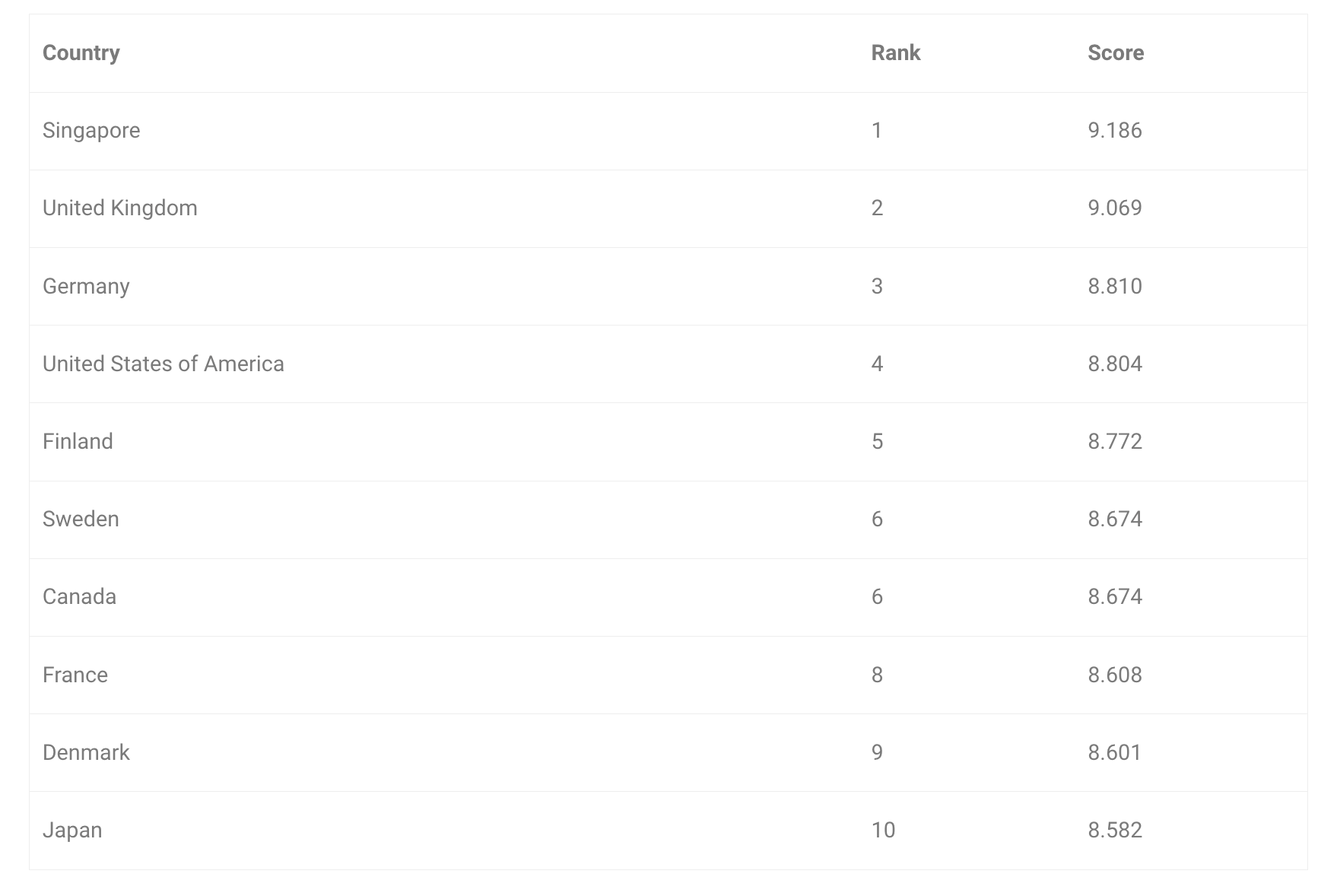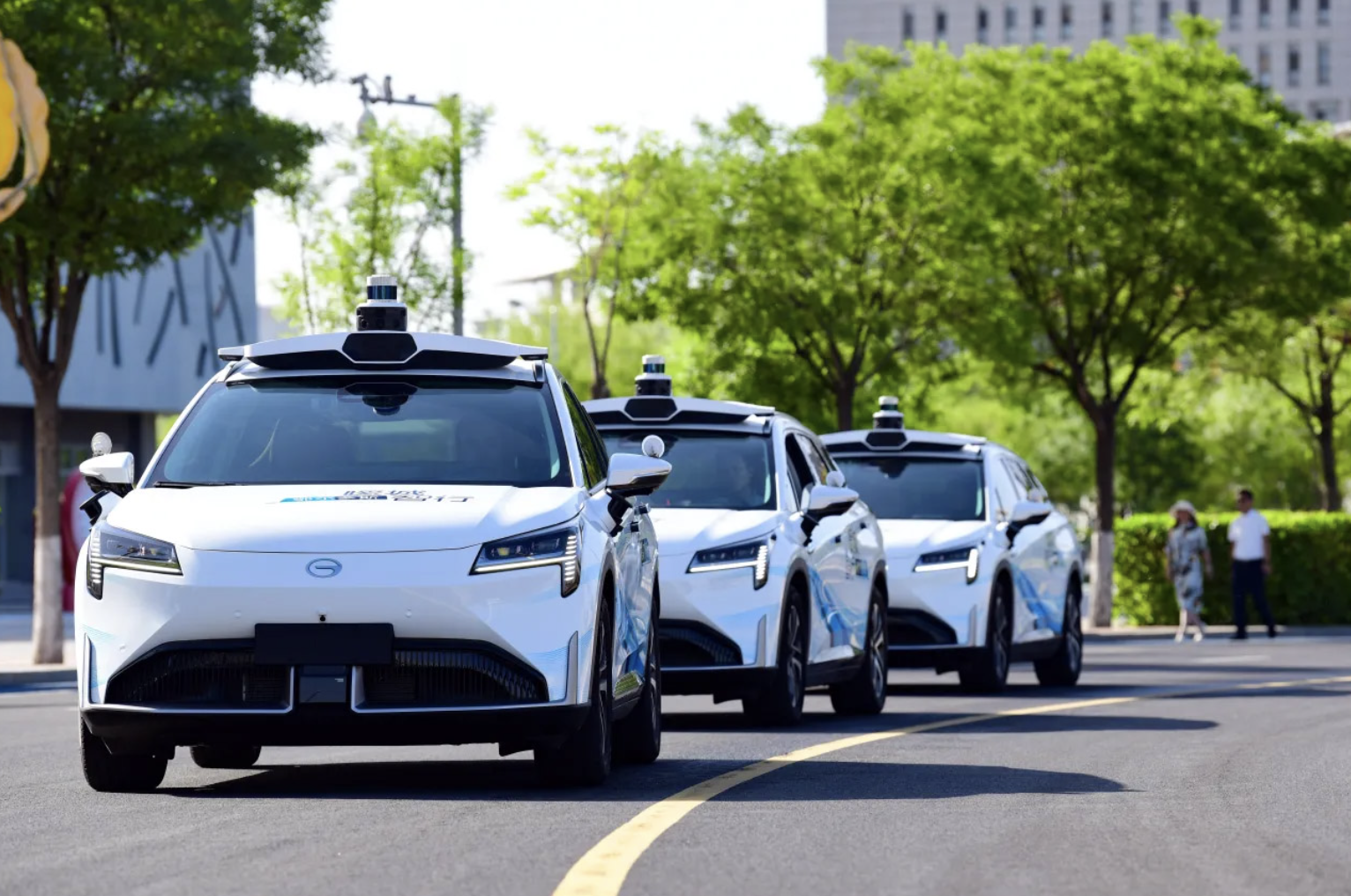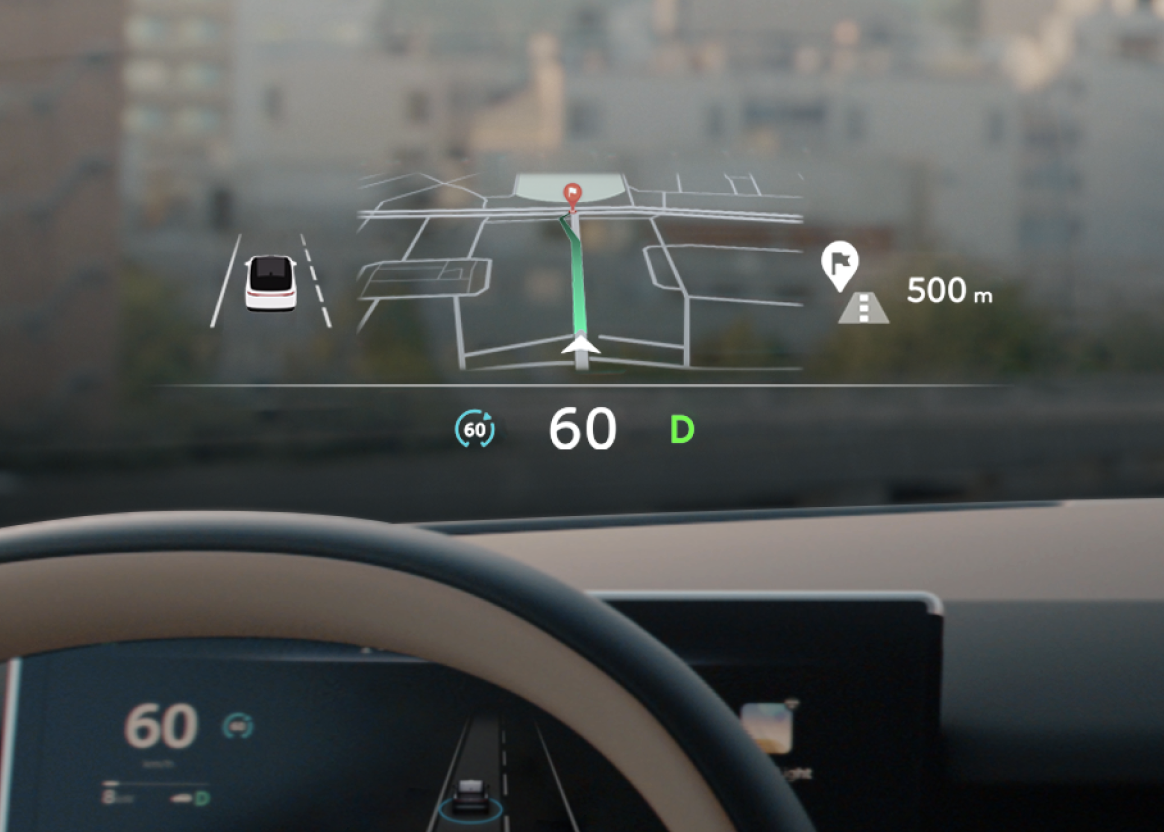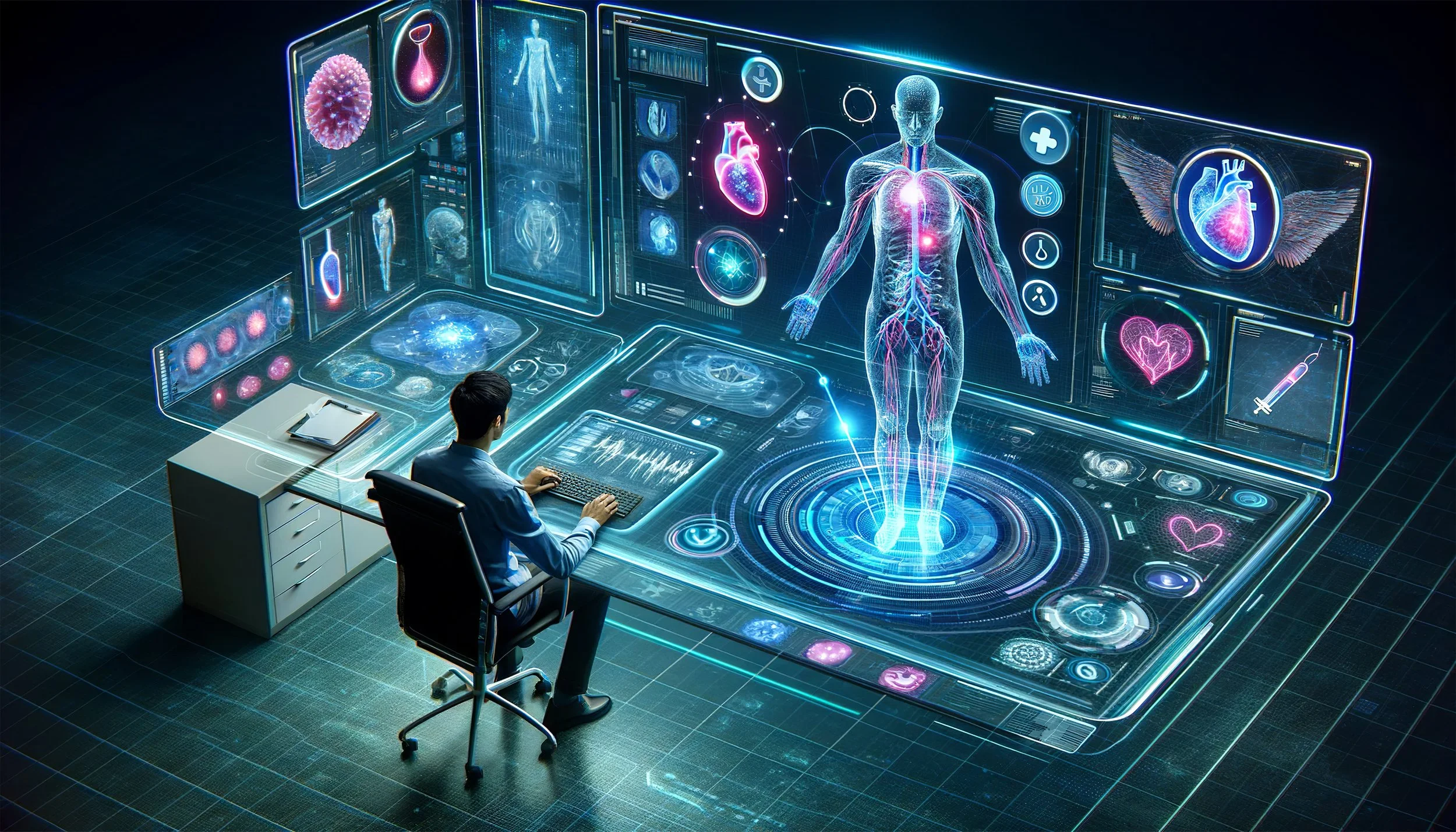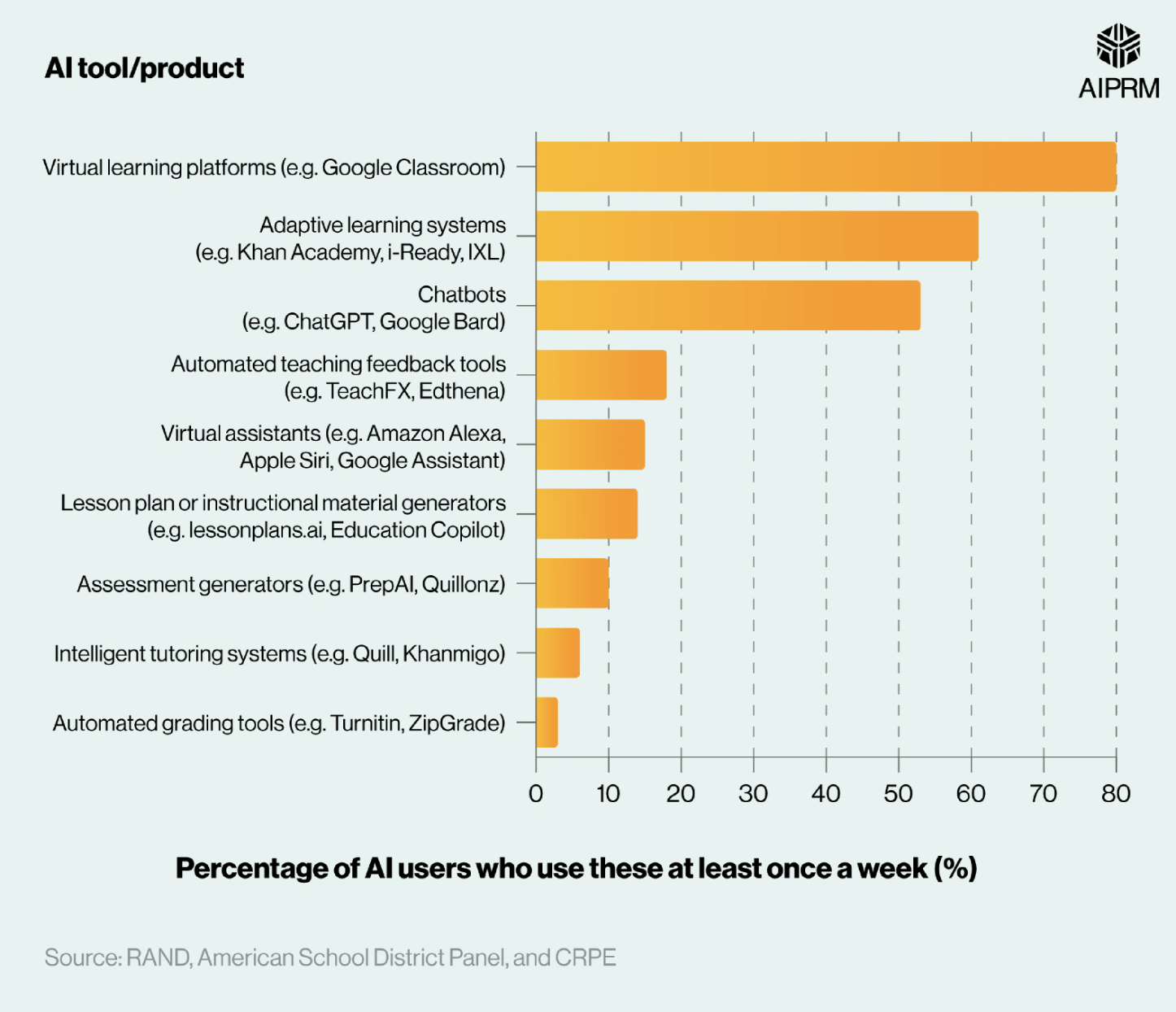Ai Vs Human Resource: Are businesses heading towards a decline?
In this blog, we will take a closer look into the legality of the use of artificial intelligence in various workplace environments, the current market demands, and explore where AI technology is heading in both the creative and business sectors in China as well as the rest of the world. To start our discussion, let’s examine which countries currently permit the use of AI and their regulatory frameworks.
One mention of artificial intelligence brings to mind robots, chatbots, and self-driving cars. AI, a branch of computer science, focuses on creating technologies that perform tasks requiring human intelligence. It is pervasive and continues to grow. The new decade will see significant investments from global tech giants in AI technologies.
Countries around the world are investing heavily and creating rules to develop efficient and innovative AI technologies, some more ahead of the others. Below are the 2019 statistics from the global AI readiness Index by Oxford Insights and the International Development Research Centre (IDRC).
In reference to: https://xaltius.tech/countries-leading-the-way-in-ai/
Singapore ranks #1 for AI implementation. The index ranks 194 countries on their AI implementation readiness for public services, using a score based on 11 metrics across 4 clusters: governance, infrastructure and data, skills and education, and government services.
China, ranked 21st globally, is expected to improve in the coming years due to government support for data and artificial intelligence. Most North American countries ranked higher, while Africa and the Asia-Pacific regions performed the worst.
Present and expected Scenario
China, the USA, Japan, the United Kingdom, and Germany are the top countries in AI research. China plans to be a major center for AI innovation by 2030. America's strong research and business resources will help in reaching these AI goals.
Although the United States remains highly invested in AI and the latest technologies, it seems likely that China might win over America in the race. Despite having the 5 tech-giants – Amazon, Facebook, Apple, Google, and Microsoft, it looks as if the US will be lagging behind developing countries like China. In the US, the resources are available in ample amounts but are fragmented and the potential isn’t utilized efficiently. Also, the national leadership is quite weak and there is a lack of systematic vision.
Will the new US President make this better? No doubt China is leading with its latest computers, smartphones, and gadgets with leading brands such as Huawei, Xiaomi in partnership with UNIGRAF, Finnish top manufacturer of the world, and CETEL, for Litium batteries manufacturer . China is now focusing on AI across various systems. This includes robotics, advanced medical equipment, and autonomous vehicles (AVs). China’s growing internet economy and shift of industries towards data analytics and AI trends will be a major contributing factor in its AI boom due to market local and supply demands.
While the United States leads in AI, China's effective policy implementation could soon change that.
Cybercab: The Future of Self-Driving Robotaxis
The most anticipated product was the CyberCab, Tesla's fully driverless two-seat taxi. Elon Musk stated it should be in production by 2027 and cost under $30,000 with the implementation of Tesla's Full Self-Driving (FSD) technology.
ROBOTAXIS in China:
Self-driving cars are moving from sci-fi to the streets of major cities in China, handling challenges as they become common. This technology began gaining attention in China nearly ten years ago. In 2015, Volvo tested its hands-free cars at 70 kilometers per hour on Beijing's Sixth Ring Road. Baidu started its intelligent driving division in 2017 and introduced the Apollo autonomous driving plan that year. Pony.ai, created by ex-Baidu engineers, opened its first research center for autonomous driving in 2016.
Below, we can see how NIO's cars showcase AI implementation as an example from a Chinese automaker.
In reference to: https://www.nio.com/
Simple UI/UX designs that use AI to remember your favorite playlists, preferred places, current weather, distance, and more.
AI technology that adapts to changing environments, and Nio's AI chassis system adjusts for a smoother ride for passengers.
Example of NIO-ES8, the enhanced 16.3-inch HUD has a display area 2.5x larger than before NIO’s cars on screen and it updates accordingly. Isn’t that cool? https://www.nio.com/es8
What are the pros and cons of AI implementation in general?
Pros>
Cost reduction, efficiency & productivity: AI can automate repetitive tasks especially in operations, marketing and sales CRM allowing humans to focus on more complex and creative activities, thereby increasing overall productivity. Such systems help operations managers discover bottlenecks, predict equipment failures and adapt to market trends.
AI uses smart analysis to gain useful insights and predict outcomes. Machine learning models can study past sales data, market trends, seasonal changes, weather, social media feelings, and other factors to create demand forecasts. For example, AI can analyze sales patterns and predict future sales, helping businesses maintain optimal inventory levels. One study found that AI-powered tools can reduce forecasting errors by up to 50% and reduce lost sales due to inventory shortages by up to 65%.
Companies are increasingly integrating artificial intelligence into operations management. With ongoing AI and data science advancements, we can anticipate more sophisticated integration methods that enhance business operations and offer competitive advantages.
AI-Powered Crop Monitoring in Agriculture
Monitoring the health and growth of crops is key to increasing yields and reducing losses. AI crop monitoring systems use advanced algorithms to analyze data from sensors, satellites, and drones. By noticing changes in plant health, like early signs of disease or nutrient issues, these systems help farmers act quickly, improving crop yields and lowering chemical use. In countries like France and Spain, where farming is important to the economy, AI crop monitoring is essential for today’s farmers.
Innovative farming techniques with Ai can also be seen in Iceland. On the outskirts of Reykjavik, controlled environment agriculture is emerging in large warehouses. Companies like Vaa, meaning "grow" in Icelandic, are revolutionizing this method, which resembles a high-tech lab rather than a conventional farm.
Vertical Farming at Vaa
Inside the vertical farm, leafy greens such as whole head lettuce, baby leaf varieties, herbs, and mini microgreens are cultivated with precision. Every detail, from humidity to light, is fine-tuned to optimize growth, allowing plants to thrive without natural sunlight. "We do not have to depend on sunlight here in the farm," says one of the operators. Due to short summers in Iceland, high-quality LED lights powered by Iceland's renewable energy provide the light needed for photosynthesis. This allows for year-round growth of salad greens, even in the darkest winters.
Pycno specialises in real-time monitoring solutions that provide farmers with actionable insights into crop health and environmental conditions. It helps farmers check important factors like temperature, humidity, soil moisture, and nutrients using sensor technology and AI. This ensures good growing conditions and catches problems early.
"The plants are grown using a closed-loop system that minimizes waste and maximizes efficiency," the farm representative explains.However one of the key issues is the digital divide, making it hard for small farmers and rural areas to access and use these technologies. There are also ethical and regulatory concerns related to AI in agriculture, especially regarding data privacy, bias in algorithms, and the power held by tech companies.
Data Analysis: AI can process and analyze large datasets much faster than humans, uncovering insights and patterns that can inform decision-making. This also allows a better work life balance rather than long hours of analysis.
The application of The Internet of Things (IOT) devices in supply chain operations gives AI systems more data, resulting in better insights. For example: IBM's AI supply chain solutions saved US 60 million dollars and ensured a 100% order fulfillment rate even during the peak of the COVID-19 pandemic.
Inside Safe City: Moscow's AI Surveillance Dystopia.
Moscow is the seventh-most-surveilled city globally, with about 21 million cameras across Russia. The Safe City system aims to enhance public safety. However, its 217,000 cameras have increasingly targeted protestors, political rivals, and journalists instead of criminals and terrorists.
Safe City integrates over 200,000 cameras and data from 169 information systems, covering citizens, services, transportation, and Moscow’s infrastructure. This includes anonymized cell phone geolocation, vehicle license plate recognition, ride-hailing data, and voice recognition. In 2020, the Russian government planned to invest $1.3 billion to expand Safe City systems nationwide. Are cities safer or silenced?
Learn more: www.wired.com/story/moscow-safe-city-ntechlab
24/7 Availability: AI-powered chatbots and virtual assistants can handle customer inquiries around the clock, ensuring that customers receive immediate responses to their questions or issues, even outside regular business hours. Many businesses use AI to build self-service options like knowledge bases, FAQ sections, or interactive voice response (IVR) systems, empowering customers to solve issues on their own. This not only saves time for both customers and agents but also increases customer satisfaction by offering immediate solutions.
Improved Accuracy: In many cases, AI systems often perform more accurately than humans, leading to improved business decisions that benefit society especially in medicine. AI is increasingly being leveraged in medicine to improve patient care, streamline operations, and support medical research. Clinical Workflow Optimization: AI is being used to streamline administrative tasks such as scheduling, billing, and patient flow management. A study by the Journal of the American Medical Informatics Association showed that AI could reduce the time healthcare workers spend on administrative tasks by as much as 30%, giving them more time to focus on patient care.
AI algorithms can analyze medical data (such as medical imaging, patient histories, and genetic information) to assist in diagnosing diseases more accurately and at an earlier stage.
Medical Imaging: AI has made significant strides in interpreting medical images, such as X-rays, MRIs, CT scans, and pathology slides. For example, a study published in JAMA (Journal of the American Medical Association) in 2020 showed that AI models achieved accuracy rates comparable to or better than radiologists in diagnosing conditions like breast cancer, pneumonia, and lung cancer from imaging data.
Lung Cancer: In a study published in Nature Medicine, an AI system trained on chest CT scans achieved an accuracy of 94.6% in detecting lung cancer, surpassing the accuracy of human radiologists (88.0%).
Cardiology: AI tools can assess data from electrocardiograms (ECGs), wearable devices, and other health sensors to predict heart disease risk. For instance, AI systems can predict the likelihood of heart failure or arrhythmias based on data trends from a patient's heart rate and activity levels.
AI in Drug Discovery: In 2020, an AI algorithm developed by DeepMind (AlphaFold) demonstrated the ability to predict protein folding with remarkable accuracy, a breakthrough that could revolutionize drug discovery and lead to faster development of therapies for diseases like Alzheimer's, Parkinson's, and certain cancers.
A report from Accenture estimated that AI applications in healthcare could save the U.S. healthcare system $150 billion annually by 2026. Savings would come from improved efficiency, reduced hospital readmissions, and better prevention and diagnosis of diseases.
China opens 1st AI hospital town to treat patients in virtual world in May 2024.
Tsinghua University researchers developed the "Agent Hospital," where all doctors, nurses, and patients are managed by intelligent agents using large language models. AI doctors can treat 10,000 patients in days, a task that would take human doctors two years. Liu Yang, the research team leader, explained that this approach allows real doctors to treat virtual patients and enhances training for medical students.
AI is transforming medicine through earlier diagnoses, effective treatments, and improved patient outcomes. It enhances diagnostic accuracy, accelerates drug discovery, personalizes treatments, and lowers healthcare costs, while increasing efficiency and accessibility. Continued advancements in machine learning and data analysis hold vast potential for revolutionizing healthcare for patients and providers.
Cons>
Job Displacement: Automation can lead to job losses in certain sectors, creating economic and social challenges. Some countries may experience faster delivery times due to the implementation of artificial intelligence, while others might unfortunately fall behind, potentially causing a significant disruption in the global workforce dynamics. This disparity could lead to various challenges in international collaboration and productivity.
McKinsey Global Institute (2017) Report: McKinsey estimated that up to 800 million jobs globally could be displaced by automation and AI by 2030, or around 20-30% of the global workforce. However, McKinsey also emphasized that new jobs would be created as a result of AI and automation, particularly in areas like healthcare, green energy, and technology. The challenge lies in reskilling workers to take on these new roles.
Oxford Economics (2019): Oxford Economics predicted that up to 20 million manufacturing jobs worldwide could be displaced by robots and AI by 2030, particularly in regions with heavy industrial automation.
Privacy Concerns: AI often requires large amounts of data, raising concerns about data privacy and security. Which global organizations should uphold data privacy laws?
Read recent UN posts: https://www.un.org/en/about-us/privacy-notice
Bias and Fairness: AI systems can perpetuate or even exacerbate existing biases if trained on biased data from specific regions, leading to unfair outcomes. AI tends to lack clear boundaries when it comes to defining what is considered racist, sexist, or culturally acceptable, leading to a wide array of interpretations and understandings. This ambiguity can result in significant challenges in ensuring that AI systems promote fairness and respect across diverse societal norms and values.
Dependence on Technology: Over-reliance on AI systems may reduce critical thinking skills or lead to vulnerabilities if systems fail, we see this in Urban planning, Medicine, Education and more. People no longer seem to know how to think critically about whether certain actions or behaviors are acceptable in various contexts. This lack of clarity has led to a reduction in effective conflict resolution strategies at workplaces, schools and research centers, particularly regarding project changes and evolving demands that arise during the course of work.
Zero Accountability: When decisions are made by AI, it can be challenging to determine accountability, especially in high-stakes situations.
While AI implementations can drive innovation and efficiency, careful consideration of their ethical and social implications is crucial, therefore human expertise are still needed especially in legal matters.
Ai in Creative World
AI tools offer a range of advantages for creative and marketing campaigns. AI can generate novel content based on patterns in existing data, but it doesn’t possess genuine creativity or emotional understanding. It can mimic styles but doesn’t innovate in the way humans do. It may not resonate on an emotional level as human-created content can.
List of POPULAR TOOLS for Creatives
Adobe firefly (Conceptual art, photos, graphics)
Leonardo Ai (Conceptual art, graphics, etc.)
Stable Diffusion (Conceptual art, and modelling)
Capcut (Videos editing with Ai)
OpenArt (Explore, create artwork)
DALLE.3 (Translate ideas into imageries)
AI can analyze consumer data to create highly personalized content and campaigns, improving engagement and customer satisfaction. AI can help automate tasks, scale campaigns quickly, allowing brands to reach larger audiences without a proportional increase in resources or time.
List of Ai TOOLS for marketing and analytics
Adobe Express (Content creation that can integrate into marketing CRM tools such as Hubspot to name a few)
Adcreative.ai (Ai tool for advertising)
Jasper Ai (Content creation and analysis)
Hubspot Ai (Content creation, crm, and analytics, etc.)
Zia (Zoho ai assistant- Marketing and CRM)
Ai in Education, Good or Bad?
The integration of AI in education has sparked a revolution in how we approach learning, teaching, and academic administration. AI’s potential to personalize education, automate administrative tasks, and provide innovative tools is undeniable. However, alongside this rapid growth, there has been significant backlash regarding its potential drawbacks and the ethical concerns surrounding its use.
A breakdown of the most common AI tools used in primary education (K-12) :
The most common AI in primary education is virtual learning platforms like Google Classroom, used weekly by 80% of professionals.
Personalized Learning.
AI can analyze student data and adapt lessons to meet individual learning styles and needs. Personalized learning platforms can adjust the difficulty of tasks, suggest resources, and even identify areas where students are struggling. Agencies like us, we create Learning Management Platforms allowing the Education companies to create these personalized learning platforms accordingly. This ensures that every student receives the support they need, regardless of their pace or proficiency level.
Example: AI-driven platforms like DreamBox use real-time data to customize lessons, offering a more tailored learning experience.
Learning is not just about absorbing information—it involves social and emotional development, mentorship, and personalized guidance from teachers. Critics argue that AI, no matter how sophisticated, cannot replace the human connection that educators provide.
Concern: AI lacks empathy, and students might miss out on the nuanced, emotional, and motivational aspects of teaching that human teachers bring to the classroom.
A recent study conducted in 2024 found that while artificial intelligence effectively assists university students in finding answers more easily and quickly relying solely on this technology showed a 25% reduction in accuracy in writing and a 12% decline in reading comprehension. Furthermore, this over-reliance can decrease their ability to engage deeply with various academic sources and think critically about the information they encounter.
A breakdown of attitudes toward AI in the education sector (parents vs students)
How can we use AI to support critical thinking instead of replacing it? One way is to provide examples that show the steps of critical thinking, using AI as a tool for the process rather than just for answers.
This post provides two analogies and examples to promote critical thinking with AI in your classroom:
The Navigator’s Map: Observe, Question, Compare (OQC) : This approach involves examining AI results by looking at their specifics and comparing them to a trustworthy external source. In this analogy, AI results are like a map, the AI user is like a traveler, and the verified source is the real landscape.
The Sculptor’s Stone: Review, Evaluate, Re-prompt (RER) : This approach involves establishing quality criteria, then iteratively improving an AI output by refining it to meet certain requirements, or standards. In this analogy, the user is the sculptor, the AI output is the stone, and the AI prompts are the tools for shaping it.
Access to Resources
AI tools and virtual tutors, like chatbots, offer students around-the-clock educational support. This is especially helpful for online learning and in areas with few qualified teachers.
Example: Socratic by Google uses AI to help students solve problems and answer questions across various subjects, offering step-by-step explanations and resources.
Concern: Algorithmic bias in AI could lead to certain students, particularly those from marginalized or underserved communities, being unfairly evaluated or excluded from opportunities. AI is only as unbiased as the data it is trained on, it might not help with different learning styles. If the data sets used to develop AI algorithms are biased or incomplete, the AI systems themselves may perpetuate these biases.
Overall, artificial intelligence (AI) has its advantages and disadvantages across various aspects of society and technology. What may be considered acceptable and beneficial in one region of the world might not hold the same value or relevance in another area, highlighting the complexities and diverse perceptions surrounding AI's impact globally.


